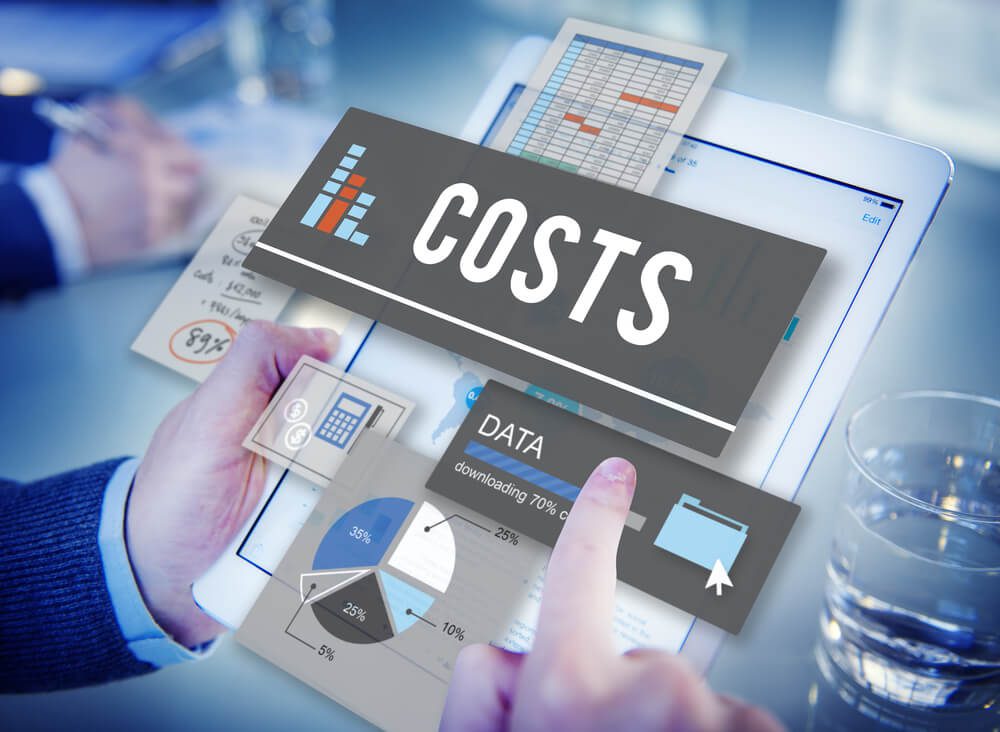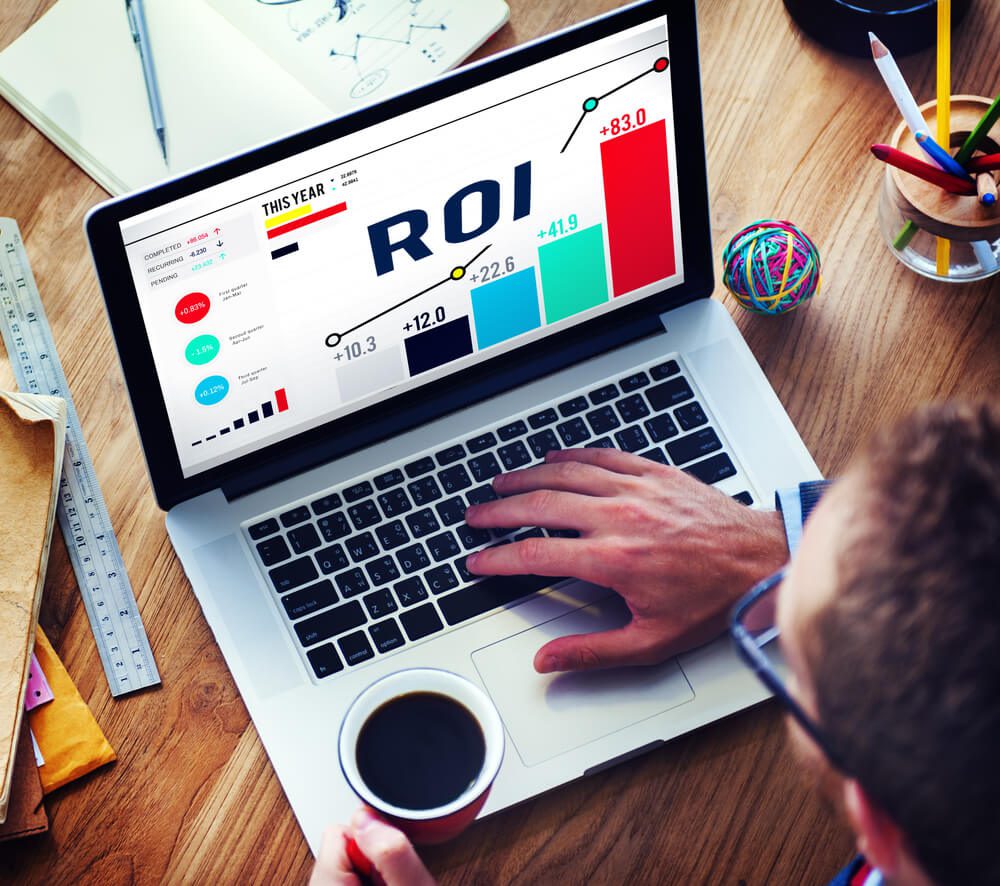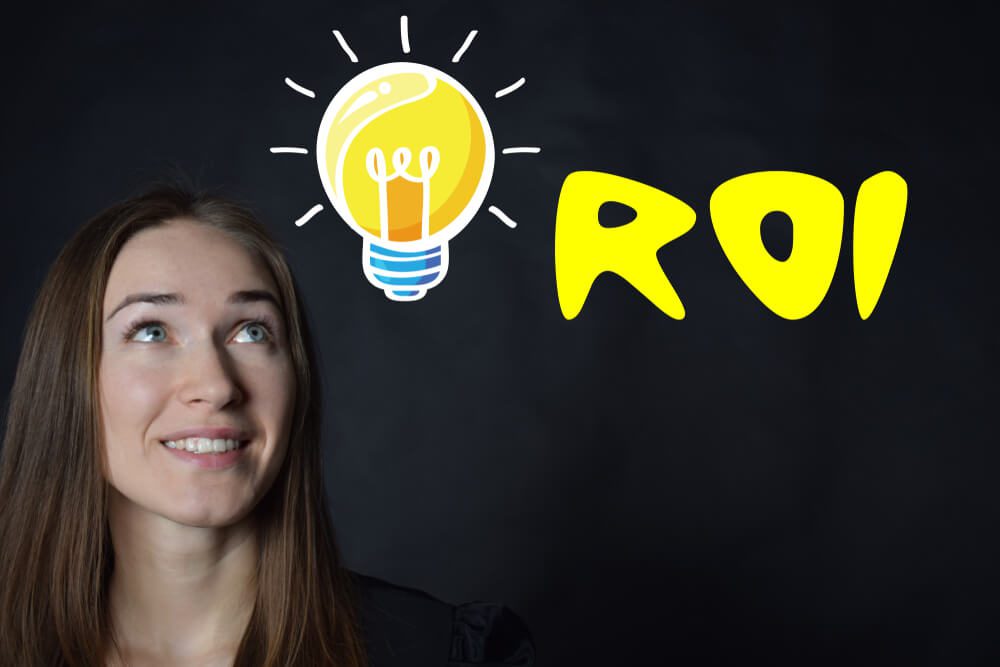
Why a Great Website Is Important
In an era dominated by monster conglomerate web experiences (Facebook, YouTube, Amazon, etc.), the humble branded website might feel like a dinosaur. If you are a small-to-midsize brand, how much does your website even matter?
The truth is, your website matters a great deal. If your goal is to build loyal and repeat customers, eventually they will visit your website. The experience they have when they get there will inform their purchase decisions in a big way.
Here is an incomplete list of reasons why a great website is more important than ever in 2023, brainstormed by our award-winning Chicago Web Design Agency:
Great websites come in all shapes and sizes, but they have one thing in common — optimized for technical SEO. These are code-level customizations that help improve your standing with the search engines.
Whereas other aspects of SEO depend on your content, keywords, or authority markers from elsewhere on the web, technical SEO involves making sure your page loads quickly and is optimized for mobile. Search engines want to see this because it ensures that they are delivering their users quality digital experiences in their search engine results. Technical SEO can have an incredible impact. After DAP’s technical SEO fixes, their client, Unity Communications, saw a 30% increase in organic rankings in only two short months.
Technical SEO also makes sure that the search engine algorithms find your entire site index and can understand what your site is about, so it can assign your site relevance for the right searches. This might mean including an XML sitemap and/or local schema markup.
 These are all qualitative reasons why a great website is important. But one of the best things about the internet is how easy it is to quantify — to count everything that happens on it. No discussion of the ROI of a website is complete without quantitative analysis. In other words, “How much am I investing, and how much do I get in return?”
Let’s start with the first part of the question — how much do you have to invest to get a great website?
There’s no easy answer to this. Simple lead-conversion websites can cost as little as $1,000 with the help of a freelancer and DIY web tools. Big, beautiful, feature-rich websites for major enterprises can cost as much as $100,000 or more with the help of enterprise-level web developers.
Why the expense? A lot goes into developing a top-notch, optimized, high-converting website with impeccable UX, including but not limited to:
These are all qualitative reasons why a great website is important. But one of the best things about the internet is how easy it is to quantify — to count everything that happens on it. No discussion of the ROI of a website is complete without quantitative analysis. In other words, “How much am I investing, and how much do I get in return?”
Let’s start with the first part of the question — how much do you have to invest to get a great website?
There’s no easy answer to this. Simple lead-conversion websites can cost as little as $1,000 with the help of a freelancer and DIY web tools. Big, beautiful, feature-rich websites for major enterprises can cost as much as $100,000 or more with the help of enterprise-level web developers.
Why the expense? A lot goes into developing a top-notch, optimized, high-converting website with impeccable UX, including but not limited to:
 Now that we understand what goes into creating a great website, we know what we need to invest to get it, or at least the range of budgets that could work for you.
Now that we understand what goes into the ROI equation, the next step to solving it is to determine what you will get out of the website. Put simply, how much money or value will the website produce?
Once you know what you need to invest and what you can expect to get back, we can build an equation to calculate the projected ROI of your website.
Every organization will have different figures to plug into the variables of that equation. So what will the variables be?
Now that we understand what goes into creating a great website, we know what we need to invest to get it, or at least the range of budgets that could work for you.
Now that we understand what goes into the ROI equation, the next step to solving it is to determine what you will get out of the website. Put simply, how much money or value will the website produce?
Once you know what you need to invest and what you can expect to get back, we can build an equation to calculate the projected ROI of your website.
Every organization will have different figures to plug into the variables of that equation. So what will the variables be?
 Again, every web development project is different, and results may vary. However, our Chicago Web Development Agency generally targets the following metrics that influence ROI:
Again, every web development project is different, and results may vary. However, our Chicago Web Development Agency generally targets the following metrics that influence ROI:
 A perennial frustration of website owners is that website ROI sometimes takes time to manifest. This results in a nerve-wracking period when you don’t know if the website is going to work and you worry the costs are sunk.
Fortunately, good web developers can install analytics to track the progress of your website, even before the cash returns manifest. Some of the reasons your ROI might take time to manifest include:
A perennial frustration of website owners is that website ROI sometimes takes time to manifest. This results in a nerve-wracking period when you don’t know if the website is going to work and you worry the costs are sunk.
Fortunately, good web developers can install analytics to track the progress of your website, even before the cash returns manifest. Some of the reasons your ROI might take time to manifest include:
To learn how Digital Authority Partners can create a standout website for you, watch this video!
A Fantastic Website Is the Foundation of Your Marketing
There are so many ways to market on the internet — social media ads, search engine ads, video ads, YouTube ads, banner ads, and so much more. It’s easy to think that your website is an afterthought. But it’s not. If your digital marketing assets and strategies were planets in a solar system, your website would be the sun they orbit around. All marketing efforts — digital or traditional — point back to your website. Why? Because the website is the digital experience over which you have complete control. Rather than conforming to the format of Facebook or YouTube, your website can help you craft a user journey specifically for your ideal customer. You can present the exact digital experience you want. One of the highest-ROI forms of digital marketing is search engine optimization (SEO). SEO doesn’t work without an amazing branded website to build authority around.Buyers Visit Your Website to Research Before They Buy
Even if your marketing didn’t point at your website (which it should), your customers are going to go there anyway. Customers want to know who they are buying from. If you think they don’t, check out the “About Us” page, or the “Mission” and “Values” pages, or several pages deep of your blog, you are mistaken. According to a recent study, 92% of consumers’ first visit to a brand’s website is to do something other than make a purchase—and 32% of visitors who do visit with purchase intent never actually make the purchase. This means that you need a website that will get customers coming back multiple times.Industry Standard Conversion Rate of 4-6%
Many companies that have never invested in their website are used to a state of affairs where their website converts no visitors into leads or customers. Their website is little more than a glorified business card or resume. It doesn’t have to be this way. The industry-standard conversion rate for an enterprise-level website is 4-6%. By investing in their digital experience, companies can reasonably expect a website that more than pulls its weight. Once you have that conversion machine in place, all that’s left to do is drive qualified traffic to the website.Localized Conversion Rate of 12-18%
If 4-6% conversion rate sounds good to you, how does 12-18%? If you want to give your business this kind of raise, go local. Localized websites tend to enjoy three times the conversion rates of non-localized websites as a general rule. Even national brands can take advantage of this effect by creating localized landing pages. These landing pages are also perfect anchors for local SEO, a form of SEO that produces some of the fastest ROI.Customized to Ideal User Personas
Many brands build their messages around “User Personas” — avatars of the ideal customer. User personas can become so specific that brands give them names; they may be parsed by sex, age, income, employment sector, geography, hobbies, pets, and any number of other demographics. A key advantage of your branded website is that you can customize the user experience to your user persona. Stuck between design decisions? Just ask yourself “What would ‘Josh’ like?” or “Which experience would ‘Heather’ prefer?”Optimized for Technical SEO
As mentioned before, you really can’t have SEO without a branded website. Sometimes SEO for a social media profile or a YouTube video will pay dividends, but nothing compared to the ROI for SEO on a branded website, customized for your user personas and calibrated to convert.Schedule Your Free Consultation
Looking To Meet Now? Schedule A Meeting Today
Reduced Lawsuit Risks Through Compliance With ADA and 508
If you have an older website, you may actually be vulnerable to lawsuits under the Americans with Disabilities Act and/or Section 508 of the Rehabilitation Act of 1973. Essentially, this means that your website has to be accessible to people with disabilities. A mounting number of lawsuits are being filed against companies for non-accessible websites, with fines of up to $55,000 for the first violation of 508 and $110,000 for subsequent offenses. Want to avoid this potentially crippling judgment? Update your website to comply with the ADA and Section 508! Three populations in particular need to be addressed when developing a compliant website:- Visually Impaired. Compliant websites must be compatible with auditory screen readers and meet requirements of font size and color contrast, accounting for the challenges of the legally blind and colorblind.
- Hearing Impaired. All auditory content must be supplemented with written content, like closed-captioning for videos.
- Motor Impaired. Websites must be navigable entirely by keyboard to accommodate users who may not be able to manipulate a point-and-click mouse or trackpad due to motor impairments.
Optimized User Experience Design
“User experience” (UX) refers to the level of ease and enjoyment of the user’s interaction with the website. This is a deceptively simple description of a complex process, involving market research, user psychology, and design theory. Our Chicago Custom Software Development Agency studies trends in UX every day. In a way, good UX design is the whole ballgame. With bad UX, no amount of traffic will convert. Users don’t think in terms of UX design—they just see a good website they like to use, one that builds their trust in the company. Or they see a bad website that they will never visit again, and an untrustworthy brand that they will certainly never buy from. For this reason, good UX design is absolutely indispensable. We saw the impact of UX improvements in our client, Sigos. UX changes, including improving the site’s information architecture (IA) and writing new content, saw a 30% increase in lead generation.Platform for Content
According to GIST, 47% of your prospects will look at 3-5 pieces of your content before they ever reach out to a sales representative. This means that without a robust content catalog, you will lose those potential customers before you even know they exist. One of the most valuable aspects of your website is the content you stock it with. According to Hubspot, companies that blog get 55% more website visitors, 97% more inbound links, and 434% more indexed pages — all crucial elements of SEO and traffic conversion. In other words, yes, it pays to blog!How Much Does a Great Website Cost?
 These are all qualitative reasons why a great website is important. But one of the best things about the internet is how easy it is to quantify — to count everything that happens on it. No discussion of the ROI of a website is complete without quantitative analysis. In other words, “How much am I investing, and how much do I get in return?”
Let’s start with the first part of the question — how much do you have to invest to get a great website?
There’s no easy answer to this. Simple lead-conversion websites can cost as little as $1,000 with the help of a freelancer and DIY web tools. Big, beautiful, feature-rich websites for major enterprises can cost as much as $100,000 or more with the help of enterprise-level web developers.
Why the expense? A lot goes into developing a top-notch, optimized, high-converting website with impeccable UX, including but not limited to:
These are all qualitative reasons why a great website is important. But one of the best things about the internet is how easy it is to quantify — to count everything that happens on it. No discussion of the ROI of a website is complete without quantitative analysis. In other words, “How much am I investing, and how much do I get in return?”
Let’s start with the first part of the question — how much do you have to invest to get a great website?
There’s no easy answer to this. Simple lead-conversion websites can cost as little as $1,000 with the help of a freelancer and DIY web tools. Big, beautiful, feature-rich websites for major enterprises can cost as much as $100,000 or more with the help of enterprise-level web developers.
Why the expense? A lot goes into developing a top-notch, optimized, high-converting website with impeccable UX, including but not limited to:
- Project Management. Keeping the train on the tracks, juggling site owners, programmers, test users, and other stakeholders.
- Design. Creating an aesthetically-pleasing and user-friendly digital experience.
- Programming. Developing the website at the code level, including programming of features and technical SEO.
- Personnel. Staffing the project, including developers, designers, market analysts, and product managers.
- Content. Developing a content catalog, including an inventory of current content, gap analysis for needed content, and commission of content assets to fill the gap.
- Content Management System (CMS). Popular examples include WordPress, Drupal, Shopify, and Magento.
How to Estimate Your Website ROI
 Now that we understand what goes into creating a great website, we know what we need to invest to get it, or at least the range of budgets that could work for you.
Now that we understand what goes into the ROI equation, the next step to solving it is to determine what you will get out of the website. Put simply, how much money or value will the website produce?
Once you know what you need to invest and what you can expect to get back, we can build an equation to calculate the projected ROI of your website.
Every organization will have different figures to plug into the variables of that equation. So what will the variables be?
Now that we understand what goes into creating a great website, we know what we need to invest to get it, or at least the range of budgets that could work for you.
Now that we understand what goes into the ROI equation, the next step to solving it is to determine what you will get out of the website. Put simply, how much money or value will the website produce?
Once you know what you need to invest and what you can expect to get back, we can build an equation to calculate the projected ROI of your website.
Every organization will have different figures to plug into the variables of that equation. So what will the variables be?
1. Site Traffic
“Traffic” to a website is the number of visitors to the website. You could count either the unique visitors to a website, or the total number of visits to a website. Remember, each unique visitor will probably visit the website multiple times before converting to a lead or making a purchase. How much traffic your website gets largely depends on your marketing of the site. Remember, your website is the foundation of all your marketing efforts. But while marketing drives traffic, the quality of a website converts traffic. There’s no point in driving traffic to a bad website. If you are updating an old website, make sure to keep track of how much traffic your website got before the upgrade and compare it to the traffic after the upgrade.2. Cost of Traffic
To determine your website’s ROI, you can’t just count the traffic — you have to know how much you paid to get that traffic. Consider everything you spent to drive the traffic you are currently getting — or the traffic you get after the redesign — and divide that number by the total traffic. This calculation will give the cost per visitor to your website.3. Conversion Rate
When a visitor to a website turns into a lead, we call that a conversion. How does a visitor become a lead? Usually by entering their contact info — email address, phone number, etc. You could tempt them to give their contact information with an offer of a discount code, a freebie, or a promise of valuable information. Regardless of how you get it, once you have the contact information, you can follow up with them and attempt to convert that lead into a paying customer. Other ways to collect traffic as leads are to use tracking pixels or browser cookies — anything you can do to tag that unique user as a visitor to your site, so you can follow up with them. Remember, industry standard for an enterprise-level website is a 4-6% conversion rate; 12-18% for a localized website.4. Closing Ratio
You can convert all the leads you want, but your website produces no ROI until you start to close sales. The simplest way to think about your closing ratio is to calculate the number of leads your sales team is able to convert into paying customers on average. Even if your website is designed to be an automated sales funnel, without the need for a human sales team to close sales, you still want to separate conversion and closing ratios. After all, not everyone in your funnel will purchase, but plenty might convert to leads and become available for follow-up.5. Customer Lifetime Value
Customer lifetime value refers to the amount of revenue each individual customer can be expected to generate on average. Note that this is different from your average cart value. Average cart value tells you how much money you make on the average sale. However, most businesses make their biggest profits on back-end sales and repeat business. That means you need to figure out how much, on average, each customer will net you once you have made your upsells, cross-sells, and retargeting. Once you know your customer lifetime value, you know how much you can afford to spend to get each customer and still turn a profit.7. Website Lifespan
An important but oft-overlooked aspect of determining website ROI is to determine the lifespan of the website itself. As much as you might wish your web development project is “one-and-done,” websites eventually become obsolete and need a complete overhaul. Results may vary, but you can really only expect a website to do its job effectively for 2-3 years before you essentially need to go back to the drawing board.Website ROI — Bringing It All Together
Now that we know the variables, we can begin to build an equation. Here’s a quick-and-dirty website ROI equation: [Traffic x Conversion Rate x Closing Ratio x Customer Lifetime Value x Website Lifespan] Website ROI = ———————————————————————————————————————— [Development Cost + (Maintenance Cost + Marketing Cost) x Website Lifespan]Other Factors in Website ROI
The above is a blunt instrument to begin to understand the return on investment you can expect for your website. However, other factors play a role in the ROI of your website. Here are some to be aware of:1. Bounce Rate
Traffic doesn’t matter if visitors immediately leave your website. The percentage of your traffic that leaves after a few seconds is called the “bounce rate.” Bounced traffic is a waste of your digital marketing dollars and also hurts your SEO. People bounce for a variety of reasons, but the most common reasons are a slow-loading website or bad UX. No bounce is a “good” bounce, but 0% bounce is unrealistic. If your bounce rate is between 26% and 40%, you’re doing well. 41% to 55% is average. If your bounce rate is over 55%, something needs to be fixed. You’re throwing away too much money running traffic to a flawed website.2. Search Ranking
Your search ranking is the authority assigned to your website by search engines relative to other websites, especially your competitors. If you have higher search ranking than a competitor, your website is likely to rank higher than that competitor on search engine results pages (SERP). While SEO is one of the highest-return digital marketing techniques, the returns tend to be delayed. You won’t see ROI in dollars and cents until your search ranking entitles you to page-one ranking on SERPs. But by tracking your search ranking, you can start to estimate the potential ROI on your website, even before the ROI manifests as real revenue.3. Automation
One of the benefits of a great website is the ability to automate your sales and support process. You can’t look only at the money the website makes; you must also assess the money it saves you in terms of labor and personnel time. The impact of automation will vary, but try to assign a dollar value to the cost savings you will realize from novel web automation.ROI Targets for a New Website
 Again, every web development project is different, and results may vary. However, our Chicago Web Development Agency generally targets the following metrics that influence ROI:
Again, every web development project is different, and results may vary. However, our Chicago Web Development Agency generally targets the following metrics that influence ROI:
- Traffic Increase: +300-400%
- Lead Generation: +500-700%
- Closing Rate: +200-400%
Time To Achieve ROI for a New Website
 A perennial frustration of website owners is that website ROI sometimes takes time to manifest. This results in a nerve-wracking period when you don’t know if the website is going to work and you worry the costs are sunk.
Fortunately, good web developers can install analytics to track the progress of your website, even before the cash returns manifest. Some of the reasons your ROI might take time to manifest include:
A perennial frustration of website owners is that website ROI sometimes takes time to manifest. This results in a nerve-wracking period when you don’t know if the website is going to work and you worry the costs are sunk.
Fortunately, good web developers can install analytics to track the progress of your website, even before the cash returns manifest. Some of the reasons your ROI might take time to manifest include:
1. Maturity of Content
Age actually plays a key role in SEO. A robust content index will improve your search ranking, but it could take several months before the web crawlers determine that your content is here to stay and begin to weigh it in favor of your domain’s authority.2. Promotional Exposure
Remember, your best customers will visit your site several times and consume several pieces of your content before they become customers. This process takes time, so be prepared and be patient. It may also take time for your marketing and promotional efforts to reach a critical mass and bear fruit. Many people become buyers simply because they have heard of your brand so many times. Give them time to discover you.3. Proficiency of Sales Team
Redesigning a website often occasions a revamping of your sales process. This might mean a learning curve for your sales team. They may require additional training and a period of grace before they work out the kinks of the new system. Invest as much time and as many resources as needed to get them up to speed. The more effective your sales team, the higher your ROI — every lead will be more valuable, because your sales team is more likely to close them. That means you can afford to spend more to get that lead — more than your competitors! ———————————————————————————————— Far from being obsolete, a great website is more relevant than ever. Invest in it wisely, and it will more than pay for itself. The above guide will help you both qualify and quantify the return on investment (ROI) you can expect to reap when you invest in a first-class web experience.Want To Meet Our Expert Team?
Book a meeting directly here



